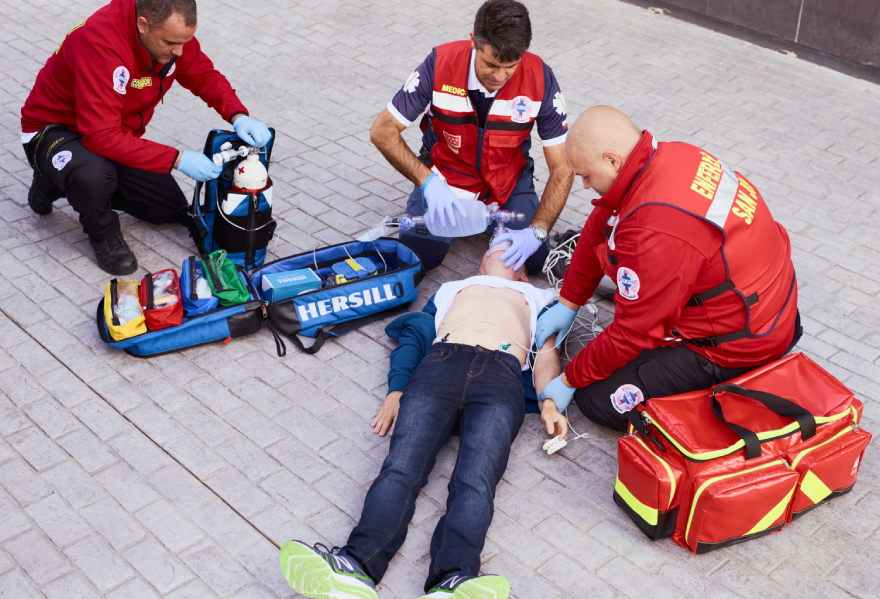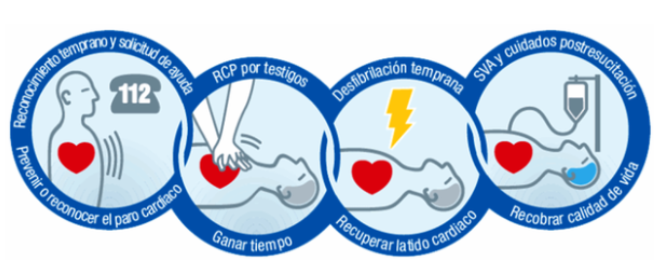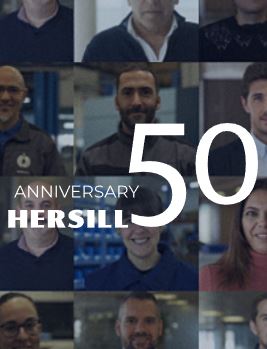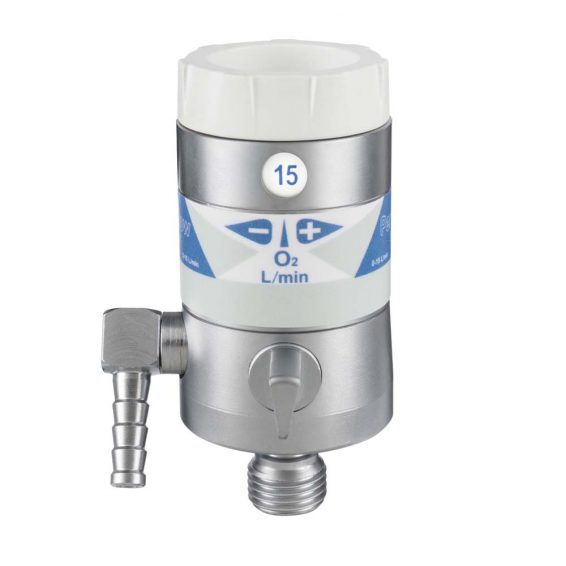HERSILL | NEWS | EDUCATION | UPDATES
In emergency situations, cardiopulmonary resuscitation (CPR) is a crucial life-saving tool. Whether in an out-of-hospital setting, such as a cardiorespiratory arrest (CPR) on the street, or in an operating theatre, where the risks are more controlled, CPR makes the difference between life and death. In this post, we explore the different phases of CPR and how medical technology, such as that developed by Hersill, helps to optimise its effectiveness in both scenarios.
Out-of-hospital Emergency CPR: Every Second Counts
In an out-of-hospital cardiorespiratory arrest, every second counts. Rapid action by witnesses, followed by the intervention of emergency professionals, is key to increasing the chances of survival. According to Bruno Bonilla, ambulance technician and teacher, “the key lies in the continuity of the chain of survival“. This process begins with first aid, passes through basic CPR performed by witnesses or first responders, and culminates with the intervention of advanced life support teams, such as emergency health technicians.
Automatic external defibrillators (AEDs) are indispensable tools in these critical moments. Rapid defibrillation is essential to restore a normal heart rhythm. Rapid intervention by emergency technicians, using devices such as the manual resuscitator and supraglottic ventilator, ensures oxygenation and circulation of the patient until advanced equipment arrives on the scene.
Basic Life Support vs. Advanced Life Support
CPR is divided into two crucial phases: basic life support and advanced life support. In basic life support, initial manoeuvres such as chest compressions and the use of an AED can make the difference between life and death. However, advanced life support, implemented by healthcare professionals, significantly improves the chances of survival.
Advanced support includes the use of specialised devices, such as mechanical ventilators, manual resuscitators and ultrasound scanners, which allow professionals to adjust interventions according to the patient’s needs. Elena Plaza, an emergency nurse and lecturer, highlights the importance of manual defibrillators, as they allow the energy of the shock to be adjusted according to the patient’s condition.
Hersill Technology: Innovation in Life Support
The devices developed by Hersill are essential to ensure the efficiency of CPR, both in out-of-hospital emergencies and in operating theatres. In critical situations, mechanical ventilators and resuscitators provide effective ventilation, optimising the resuscitation process. These devices are used both in emergencies and in operating theatres, where precision and speed of intervention are vital.
The use of advanced technology in life support not only improves survival rates, but also facilitates the work of healthcare professionals by providing more precise and safer control over the patient’s oxygenation and circulation. From the use of emergency kits to automatic chest cardio-compressors, technological innovation remains a key tool for improving the effectiveness of CPR.
CPR in the Operating Room: A Coordinated Process
In the surgical setting, CPR is performed by a highly specialised team comprising anaesthesiologists, surgeons and nurses. The anaesthesiologist plays a key role, performing advanced life support, while the surgeon performs chest compressions. The nurse operates the defibrillator and administers the necessary drugs.
Dr. José Javier Ariño, an anaesthesiologist specialising in emergency surgery, points out that, in emergency surgery, cardiac arrests can occur up to twice a week. “The anaesthesia machine allows ventilation while the team performs advanced CPR manoeuvres,” explains Ariño, highlighting the importance of coordination between all team members in these critical moments.
The Future of CPR: Technology and Collaboration
CPR depends not only on human skill, but also on technological advances that facilitate its implementation. From advanced ventilation devices to manual defibrillators, each tool is essential to optimise resuscitation efforts. Innovative solutions developed by Hersill contribute to improving the effectiveness of CPR in the emergency and operating room, ensuring fast, quality care for patients in emergency situations.
Cardiopulmonary resuscitation is a critical life-saving intervention, whether in out-of-hospital emergencies or in the operating theatre. Medical technology plays a vital role in every phase of the process, from basic to advanced life support. Hersill devices, such as ventilators and resuscitators, are essential to ensure effective ventilation and precise control of the patient’s oxygenation and circulation. Every second counts, and with the right technology, we can increase the likelihood of survival and provide quality patient care in emergency situations.
Hersill is part of the Technologies that make a country campaign, which showcases the technological companies that develop, manufacture and innovate in Spain. Its work is actively contributing to the strengthening of the national technology industry, the creation of jobs and economic progress, while reinforcing Spain’s industrial autonomy to face the challenges of the future.




